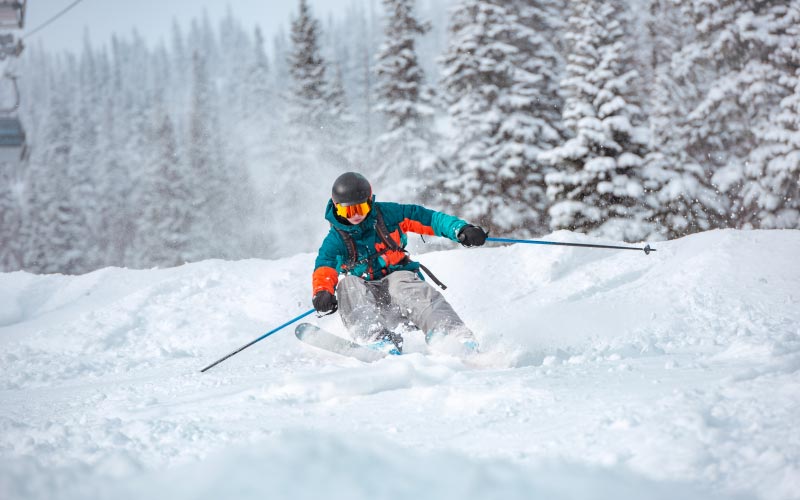Reno / Tahoe is a Winter Wonderland
For most living in the Reno/Tahoe region, the highlight of winter is the ski and snowboard season. The Reno/Tahoe region is the prime place to live for winter sport enthusiasts with ample space and opportunity to ski and snowboard. With the vast array of mountain lodges in close proximity, a day on the slopes is just a short drive away. Many winter sport enthusiasts spend nine to ten months of the year preparing for the short-lived ski and snowboard season. Unfortunately, each year thousands of slope goers find themselves severely injured on the mountain in ski or snowboard related accidents.
Skiing and Snowboarding Popularity Has Skyrocketed
Over the past two decades the popularity of skiing and snowboarding has skyrocketed among the American population. Skiing and snowboarding events have replaced ice skating as the highlight events of the Winter Olympic Games, and extreme sporting events like the Winter X Games and the Mountain Dew Action Sports Tour have become popular television broadcasts. Professional skiers and snowboarders like Bode Miller, Johnny Mosley, Seth Wescott, and Shaun White have become regular household names with millions regularly watching television and internet broadcasts of them racing down the slopes before attempting death defying stunts. Additionally, recent technological advances have allowed ski and snowboard manufactures to develop both skis and snowboards that allow their riders to go faster, turn sharper, and jump easier. However, to prevent injury it is important to realize that not everyone has the skill, training, ability, and/or equipment to ski or snowboard like professional winter sport athletes.
But There Are Risks
Many fail to realize the severity of the risks associated with skiing and snowboarding injuries. The skiing related deaths of both Michael Kennedy and Sonny Bono in the Winter 1997/1998 heightened the public awareness of the dangers on the slopes. Common injuries sustained on the slopes range from mild injuries like cuts, bruises, sunburns, and muscle soreness to severe injuries like joint strains, sprains and dislocations, concussions, bone fractures, hypothermia, and death. Statistically the most common, yet most severe, ski/snowboard related injuries are injuries to the ligaments and cartilage of the knee, traumatic head injuries, and spinal cord injuries. Fortunately many experts believe that severe injuries like traumatic head injuries and spinal cord injuries could be easily prevented or reduced with the use of proper safety equipment. A very small percentage of regular slope goers regularly wear a ski/snowboard approved safety helmet. Most experts feel an appropriately rated helmet is the single most important piece of equipment that could provide the most adequate protection for both traumatic brain and spinal cord injuries. The use of helmets in skiing and snowboarding has become such an important topic that the American Association of Orthopaedic Surgeons (AAOS) has actually instituted a position statement urging the use of appropriate ski and snowboard helmets. Appropriately rated ski and snowboard helmets can be purchased at most major sporting stores, are available in many styles, and cost on average $50-$300.
Safety Steps You Can Take
Other important safety factors when preparing for a day on the slopes include:
- Begin exercising 4-6 weeks before start of ski/snowboard season to build up strength, stamina, balance, and agility
- Before each season check that your equipment (skis, snowboard, boots, bindings, gloves, and jacket) still fit properly, and before each trip out check equipment for any signs of damages that could lead to accidents
- Dress in layers and ensure all warm clothing fits properly
- Apply sunblock with a high SPF before leaving your house and wear UV filtering goggles or sunglasses once on the mountain
- Just like any other exercise begin a day of skiing/snowboarding with a mild warm-up and then gradually work up to those high-skilled runs or paths
- Don’t attempt any runs or paths that you know you are not skilled for and always stay on groomed paths.
Be Safe, Be Fit, Be Careful
Skiing and snowboarding are popular recreational and competitive activities that have the potential for severe injury. Regular skiers and snowboarders will spend thousands of dollars each winter to pay for lift tickets, travel fees, and ski and snowboard equipment. Unfortunately, safety and safety equipment are not always at the top of the list for most winter sport enthusiasts. Experts urge skiers and snowboarders to spend the extra money to purchase appropriate safety gear, replace damaged gear, and ensure all gear fits properly. Those extra couple hundred dollars could be the difference in preventing ski or snowboard related severe injury, paralysis, or even death on the slopes.
Article written for “We’ve Got Your Back Magazine”
By Derek S. Drake, RN
